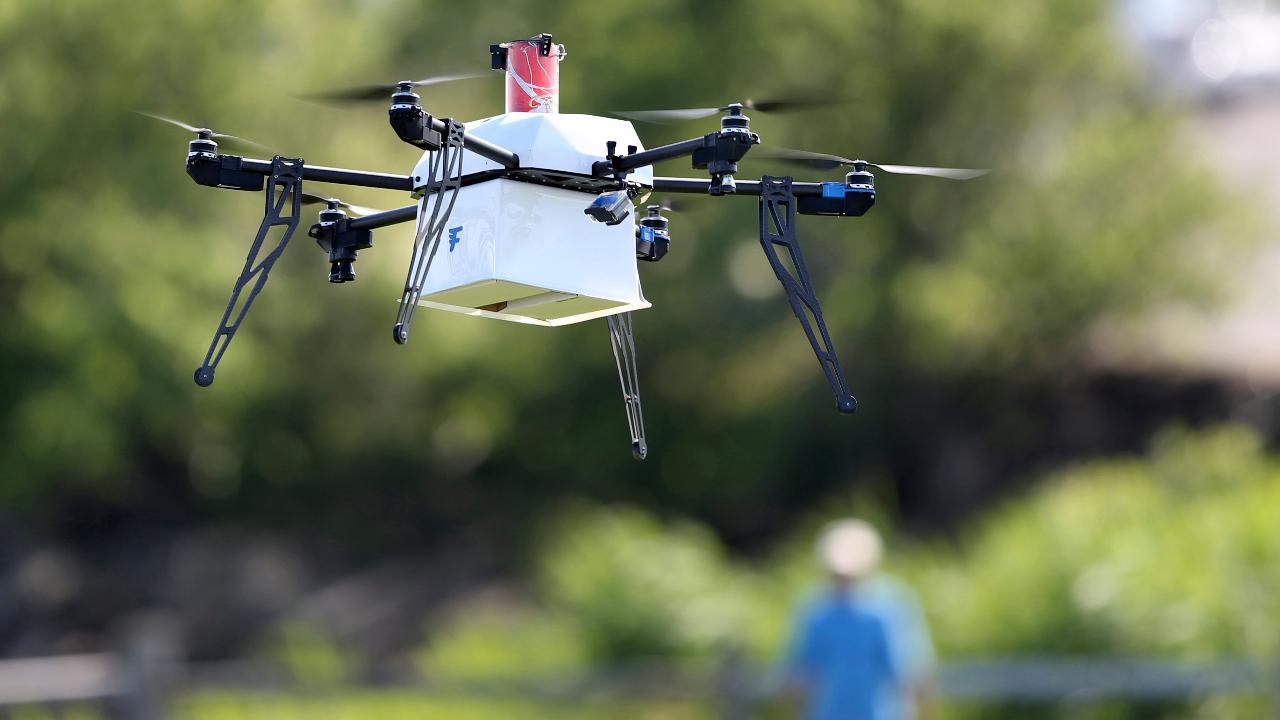Have a feral pig problem? There’s a drone for that.
DURANT, Oka. – Two years ago, Joel Tumblson was surveying the family’s 25-acre cantaloupe field and didn’t notice any usual activity. Three days later, after turning attention to another melon field that needed harvesting, he came back to find the entire crop was destroyed by feral pigs, a loss of about $75,000.
“It was like a herd of elephants went through there,” he told FOX Business. “It’s unbelievable what they can do.”
Trumblson is not the only farmer to suffer at the trotter of a pig. Some in the region have lost entire 30-acre watermelon fields in as little as two nights to a herd of wild hogs, known as a sounder. Experts say the total economic damage the boar's cause is as much as $2.5 billion annually.
Federal and state governments have been largely unable to help, farmers say, and the options for eradication aren’t sustainable, like using helicopters to shoot the hogs from the sky.
Enter drones.
Oklahoma’s Choctaw Nation and its nearly 11 counties are one of 10 sites chosen by the Federal Aviation Administration to test unmanned aircraft. It’s the only American Indian tribe to obtain the Integration Pilot Program (IPP) designation, largely due to a 44,000-acre, 27-mile long field in the region that provides ample testing ground for a variety of uses for drones.
“It’s one of the largest, first serious attempts to look at the realism of using drones for agriculture," said James Grimsley, an advisor to the Choctaw Nation on its IPP program. “We represent the areas that may have inconsistent infrastructure buildup. We may have broadband in some areas, some areas don’t have broadband yet. So how do we integrate and bring all this technology out when we have gaps in infrastructure."
One application currently being tested is whether drones can be used to drop feed to rebait automated traps to catch feral pigs. Another is using unmanned aircraft to help count cattle. While those uses may seem arcane to those living in major metropolitan areas, it could be a lifesaver for the agriculture industry – a sector that is often at the forefront of early adoption of new technology.
“Look at how a piece of technology like GPS transformed the agriculture industry,” said Dillon Payne of the Noble Research Institute. “This has the potential to be something similar to that once we give the just-use cases and the policies allow us to do things with a little more freedom.”
It also shows just how revolutionary drones can be.
Cities across the U.S. are using unmanned aircraft for a number of uses, from the transportation of medical supplies in Reno, Nevada and counting of cattle in Durant, Oklahoma, to overseeing pipeline safety in North Dakota. The Department of Interior used unmanned aircraft to assist in the Kilauea volcano explosion in Hawaii last year, while Google’s Wing is hoping to begin delivering packages to customers’ doors with drones.
The Trump administration is still weighing several critical new regulations to govern drones that will play a key role in determining how quickly the technology is adopted by the broader public. Among them is a draft rule expected later this year on remote identification, as well as one released earlier this year that would open the door for more nighttime flights and testing over humans.
CLICK HERE TO GET THE FOX BUSINESS APP
For the Choctaw Nation, the IPP designation has helped to draw new interest to the region from companies like General Electric.
“We want to be a leader now in the new technology that we think is going to hit with electric vehicles, with drones. We see the future, we want to get ahead of it,” Oklahoma Gov. Kevin Stitt, a Republican, said at a recent conference hosted by the Choctaw Nation.




















